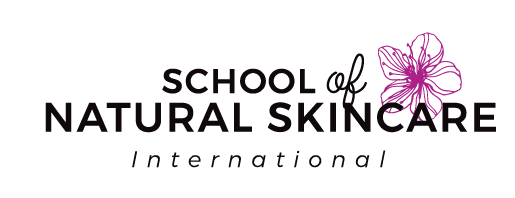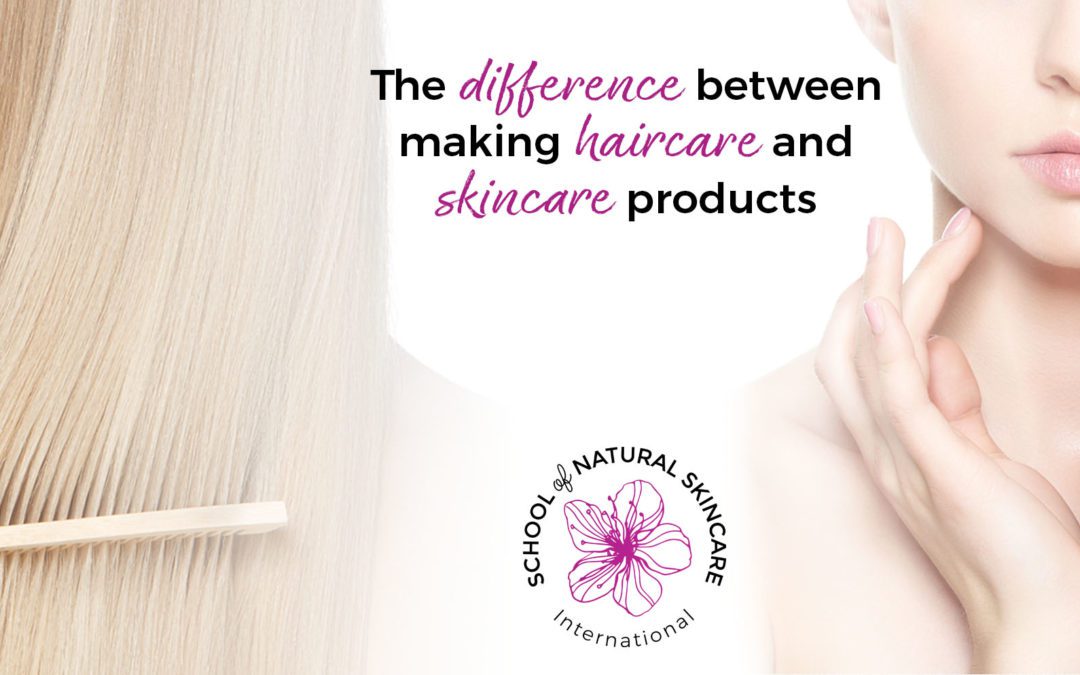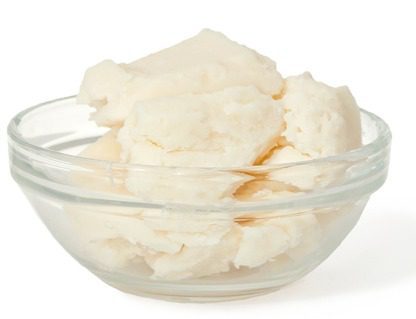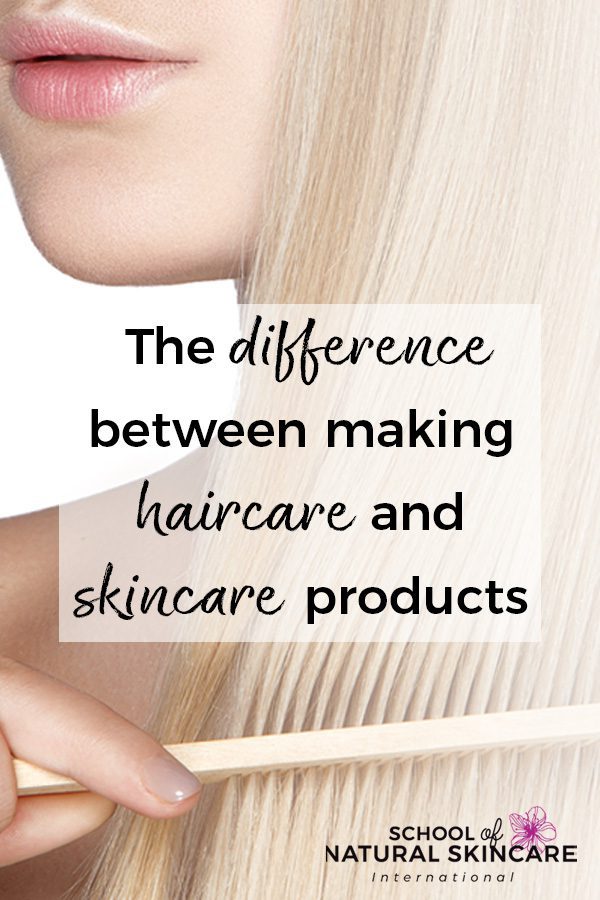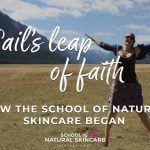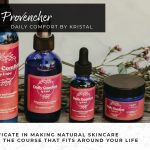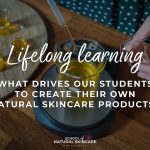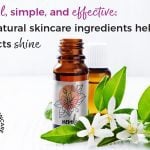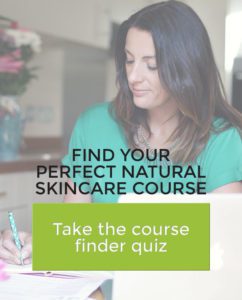From simple balms and body butters to rich, moisturizing night creams, skincare products are typically the first things that new formulators start with. And they’re likely to be the ones that achieve the most successful results, too, whether that’s due to the relative approachability of recipes, or the low risk involved in terms of ingredient cost. If a skincare product fails or doesn’t achieve the desired result, it’s easy to start over and try again.
(Especially if you arm yourself with the knowledge of how to formulate successfully!)
Once you begin to create your own products—and especially if natural and organic bodycare is a priority for you—you’ll likely want to switch over your haircare products to natural alternatives. But as you’ll quickly discover, there is a world of difference between formulating skincare products and haircare products.
Many of our students report that although they were able to pick up new skincare formulation skills with relative ease, successful haircare product formulation remained a tricky, elusive challenge. There’s just not a lot of quality information out there. And we’ve heard the woes of rough, coarse, frizzy hair that resulted from these attempts.
So, why is it that things that work well on the skin don’t achieve the same result on the hair or scalp? The difference is really quite straightforward.
Skin Is Alive; Hair is Dead
To put it simply, skin is alive. You have seven layers of skin that are constantly rising up, changing on a cellular level, and eventually flaking off, to be replaced by new cells. In addition to all of its protective and sensory functions, the skin also helps to prevent water loss. When you formulate skincare products, it’s with the intent of nourishing a living organ—the largest organ in our bodies!
Hair, however, is not alive. The part we actually see, called the hair shaft, is made of dead cells, whereas skin is a living tissue. This means that hair does not have the same regenerating properties as skin does.
Living skin can heal; we heal tiny cuts and scrapes all the time, and can even increase skin elasticity and health by choosing ingredients and products that boost that ability in our skin. But if hair gets damaged, it can’t heal the way skin does. It can’t return to previous state.
This is the reason why it’s crucial to understand how to prevent damage and how to nourish the hair.
Haircare Vs. Skincare: So What’s The Difference?
The process for formulating both haircare and skincare products begins with the same first step: Considering how the customer will be using the product, and what they expect it to do. From there, you can work backwards, choosing ingredients and selecting additional features, such as scent and color, thickness and viscosity, and lather amount.
However, the next steps for creating haircare and skincare products differ in two very important ways.
Ingredient Choice
While there are many ingredients that can be used in all kinds of bodycare formulations, it’s crucial to understand how those ingredients work on the hair vs. how they work on the skin. Hair and skin have very different needs, so naturally, the ingredients you use in haircare formulation need to be specifically tailored to the unique needs of the hair and the scalp.
Because skin is alive, and hair is not, haircare ingredients targeting the hair specifically won’t have the same mechanism of activity as they do in skincare. The hair has no lipid matrix, no stratum corneum, and ingredients which might be excellent for nourishing skin won’t have the same effect on the keratin of the hair. We often talk about ‘feeding’ the skin, but the hair can’t be ‘fed’ in the same way. It has different needs.
For example, although many DIY recipes out there suggest that you can use body-safe soaps to cleanse your hair and scalp, you’re not likely to be happy with the long-term results. Or even the short-term ones, really.
While castile soap will definitely cleanse the hair, it has a very high pH of around 9–10. As we’ve mentioned before in our article Five Natural Shampoo Recipes That Won’t Work (and why!), when hair is treated with an alkaline product, it will leave the cuticle cells open and prone to damage. Hair with an imbalanced pH will also be a lot more prone to breaking and tangling.
While some ingredients can be used in both haircare and skincare products—shea butter and coconut butter being two great examples—others aren’t always the best choice for moisturizing hair. Sunflower oil, for example, is a nice oil for skincare, but it isn’t able to penetrate the hair shaft, so it has no special benefit for the hair.
Another key thing to remember when approaching haircare product formulation is that essential oils have no real effect on the hair, other than making it smell nice. They do, however, benefit the skin on the scalp! So any treatments with essential oils and cosmeceuticals need to be applied to the scalp to actually work.
Also, the majority of haircare products tend to be rinse-off—shampoos, and most conditioners—while skincare products are usually leave-on—lotions, moisturizers, serums, and so forth. This again will impact the extent to which the ingredients can benefit the hair.
This is why it’s important to know which ingredients are beneficial for hair, even if applied for a short time.
We often talk about ‘feeding’ the skin, but the hair can’t be ‘fed’ in the same way.
It’s all about knowing the process, and why the ingredients work the way they do!
Formulation Process
The other key difference between formulating haircare and skincare products is that the actual process is different—and can be more complex.
Many wonderful, natural ingredients can be used in both haircare and skincare. But, what is different is the formulation, or how the ingredients are included. A body butter with shea butter and coconut oil for dry skin would only make the hair oily, but a conditioner with the same oils (used at different percentages) and combined with a different emulsifier, will nourish the hair, make it feel silky smooth and tangle free.
It’s all about knowing the process, and why the ingredients work the way they do!
When you’re making a body butter, cream, or lotion, you’ll want to choose the nourishing ingredients that help heal the skin, as well as know how to make an emulsion—but a conditioner isn’t just a lotion for hair! You need to know which emulsifier to choose, which emollients and at what level to include into the formulation, so the conditioner will work as it should without having any unwanted effects on the hair (like making the hair oily or drying it out).
And when you are formulating a facial toner, you’d want to get your water and hydrosols, and add active ingredients and preservative to it. But if you want to make a shampoo that foams and cleanses, without stripping away the natural, protective oils, you need to know which surfactants to use and how to safely and effectively incorporate them into your product.
Substituting ingredients and calculating active matter
In many skincare products you can easily substitute one ingredient for another without dramatically altering the product. For example, you can often substitute one carrier oil for another. It’s not so simple when it comes to haircare products like shampoos.
When it comes to formulating shampoo, there is a very important consideration: the amount of active matter it contains.
The amount of active matter is one factor that determines how cleansing the product is. Different types of shampoo, and different hair types, require a different percentage of active matter.
You need to calculate the amount of active matter in your formula each time you create one. It will be different depending on which surfactants you use, from which supplier, and it what quantity.
This means that you can’t simply take a formula and substitute one surfactant for another. There are some calculations you need to do to switch surfactants and still get your desired result.
It’s not complicated, but you do need to know the process to follow. That’s why in our haircare formulation course we have included a lesson dedicated to calculating active matter (and have even created a handy active matter calculator for you to use!)
Although people might be put off from formulating haircare products due to past experiences, being unsure about treatments, unsure about how to read more complex haircare labels, or just feeling intimidated, there’s really no reason to stress about it!
Formulating haircare products is more complex, but it’s not impossible.
Creating haircare products will require more chemistry knowledge than creating most simple skincare products. It’s easy to make a lip balm, healing ointment or a whipped body butter without understanding the chemistry behind the ingredients. When it comes to haircare, however, you will need to understand pH, surfactants, electric charge etc.
Just like with skincare, there’s a learning curve where you can pick up new information about process, ingredients, and techniques—and once you know it, you can make a wonderful variety of shampoos, conditioners, hair treatments and other haircare products with ease.
If you’re interested to learn more about how to make your own natural haircare products (shampoos, conditioners and treatments), then check out our Diploma in Natural Haircare Formulation! It takes you step-by-step through everything you need to know to formulate your own custom, high-performance shampoos and creamy, perfect conditioners. Learn from experienced and professional formulators and be supported each step along the way.
We’re excited to teach you how to formulate your very own haircare products using natural ingredients from scratch 😀
Get your free Natural Shampoo & Conditioner Recipe Book
Learn to make your own natural shampoos & conditioners with luxurious natural ingredients.
Download this fabulous book and discover recipes for:
- Cocoa Butter and Patchouli Solid Shampoo Bar
- Shea and Coconut Conditioner for Dry Hair
- Monoi Beauty Butter for Hair
- Vanilla and Benzoin Solid Conditioner Bar
- Gentle Aloe and Chamomile Liquid Shampoo for normal hair
Plus we’ll share with you:
- The primary function of shampoos and conditioners and how they work
- A handy video where Gail shows you the equipment that you’ll need
- A list of recommended suppliers in the UK, USA and Australia
- Tips on customizing for different hair types
- 7 powerful ingredients to personalize your haircare products
Enjoyed reading this? Save this image below on Pinterest so you can be sure to remember!
